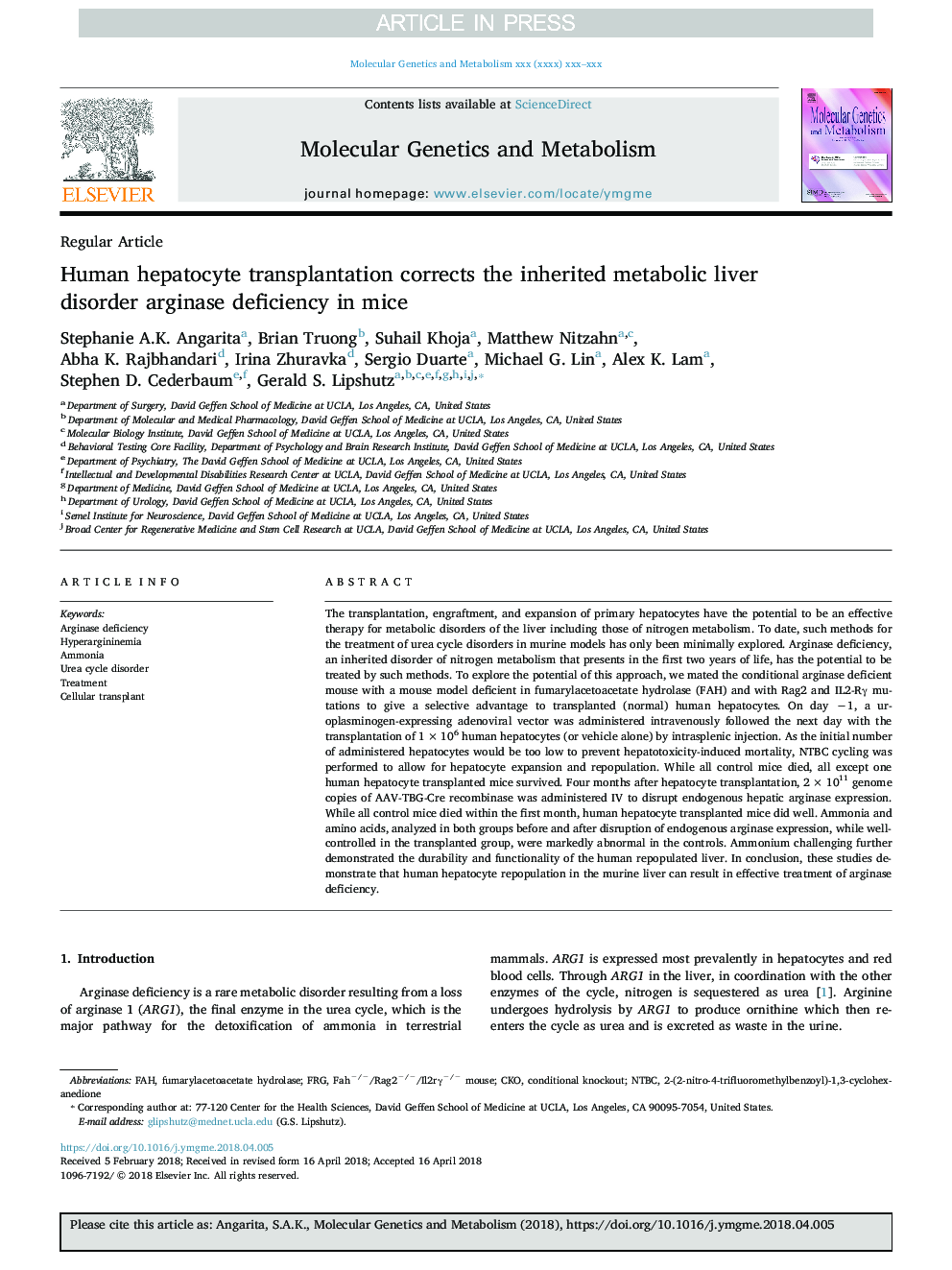| کد مقاله | کد نشریه | سال انتشار | مقاله انگلیسی | نسخه تمام متن |
|---|---|---|---|---|
| 8342946 | 1541545 | 2018 | 10 صفحه PDF | دانلود رایگان |
عنوان انگلیسی مقاله ISI
Human hepatocyte transplantation corrects the inherited metabolic liver disorder arginase deficiency in mice
ترجمه فارسی عنوان
پیوند هپاتوسیت انسان، کمبود آرگانیاز اختلال متابولیک کبدی در موش ها را تصحیح می کند
دانلود مقاله + سفارش ترجمه
دانلود مقاله ISI انگلیسی
رایگان برای ایرانیان
کلمات کلیدی
موضوعات مرتبط
علوم زیستی و بیوفناوری
بیوشیمی، ژنتیک و زیست شناسی مولکولی
زیست شیمی
چکیده انگلیسی
The transplantation, engraftment, and expansion of primary hepatocytes have the potential to be an effective therapy for metabolic disorders of the liver including those of nitrogen metabolism. To date, such methods for the treatment of urea cycle disorders in murine models has only been minimally explored. Arginase deficiency, an inherited disorder of nitrogen metabolism that presents in the first two years of life, has the potential to be treated by such methods. To explore the potential of this approach, we mated the conditional arginase deficient mouse with a mouse model deficient in fumarylacetoacetate hydrolase (FAH) and with Rag2 and IL2-Rγ mutations to give a selective advantage to transplanted (normal) human hepatocytes. On day â1, a uroplasminogen-expressing adenoviral vector was administered intravenously followed the next day with the transplantation of 1â¯Ãâ¯106 human hepatocytes (or vehicle alone) by intrasplenic injection. As the initial number of administered hepatocytes would be too low to prevent hepatotoxicity-induced mortality, NTBC cycling was performed to allow for hepatocyte expansion and repopulation. While all control mice died, all except one human hepatocyte transplanted mice survived. Four months after hepatocyte transplantation, 2â¯Ãâ¯1011 genome copies of AAV-TBG-Cre recombinase was administered IV to disrupt endogenous hepatic arginase expression. While all control mice died within the first month, human hepatocyte transplanted mice did well. Ammonia and amino acids, analyzed in both groups before and after disruption of endogenous arginase expression, while well-controlled in the transplanted group, were markedly abnormal in the controls. Ammonium challenging further demonstrated the durability and functionality of the human repopulated liver. In conclusion, these studies demonstrate that human hepatocyte repopulation in the murine liver can result in effective treatment of arginase deficiency.
ناشر
Database: Elsevier - ScienceDirect (ساینس دایرکت)
Journal: Molecular Genetics and Metabolism - Volume 124, Issue 2, June 2018, Pages 114-123
Journal: Molecular Genetics and Metabolism - Volume 124, Issue 2, June 2018, Pages 114-123
نویسندگان
Stephanie A.K. Angarita, Brian Truong, Suhail Khoja, Matthew Nitzahn, Abha K. Rajbhandari, Irina Zhuravka, Sergio Duarte, Michael G. Lin, Alex K. Lam, Stephen D. Cederbaum, Gerald S. Lipshutz,
